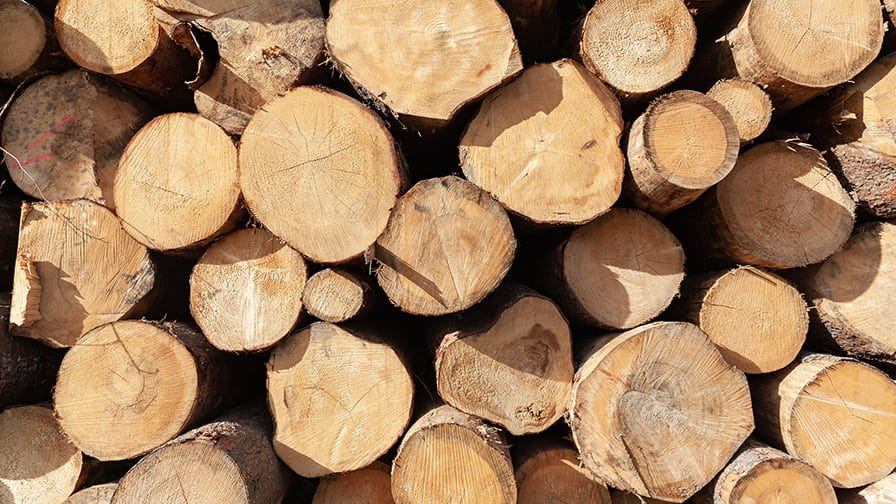How to Avoid "Wavy" Cuts
By Wood-Mizer, Europe

Many operators know this problem: during sawing "wavy" cuts appear. The problem is really serious, but you can solve it. Let us examine, step by step, all the factors affecting the sawing process. There are four of them: the operator, the sawmill, the blade and the wood.
The operator
The first point on our list sometimes can become the last one. Because correct sawmill alignment, cutting rate and blade choice depend on the operator. The cutting rate should be very close to the maximum for the given wood type. If the cutting rate is not enough the surface looks like goose bumps. If the cutting rate is too high then the blade has no time to make a cut and therefore "wavy" cuts appear.
Special attention should be paid to sawmill alignment. Very often, even experienced operators don't pay due attention to the sawmill condition. They say that this procedure takes too much time. So they service the equipment only once a week or even less. Of course the adjustments and repair of the sawmill take time because during a week there can be accidents. We recommend you to check the alignment of the sawmill every day and without fail after the blade guide rollers hit a log. To check does not mean to align, and this procedure does not take much time at all. The operator should also monitor the condition of the blade.
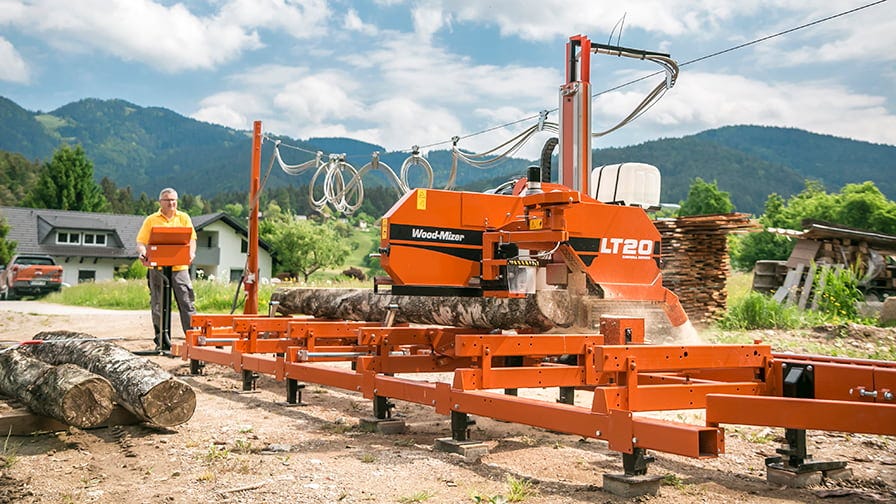
The sawmill
Let us view what components of the sawmill can affect the appearance of "wavy" cuts.
Blade guide rollers. They define the blade positioning in respect to the sawmill bed. Proper positioning of the blade guide arm gives added blade stability in the cut. Correct blade guide positioning is checked with the alignment tool provided with the sawmill. This tool should be kept separately from other equipment. If this tool is damaged we recommend you buy a new one.
So, let us examine the rollers. They should not have any “flats”, which may cause blade vibration. There should not be any scoring on the flanges. Moreover you should check the bearing condition. Only a little movement is allowed.
Then you should check the tightness of the roller pin in the mount. If there is any movement you should replace the body. It is not worth trying to repair any damage to the roller mounting – it is cheaper and safer to replace it. Broken pins and lock nuts should be replaced at once, then we recommend using only high-quality alignment tools.
After all defect parts are replaced you should perform the full guide roller adjustment process. To provide evenness of roller pressure and parallel cuts, you should check that the blade guide arm is running parallel to the bed rail along its full movement. This procedure is often missed or performed wrongly. This can result in wavy cuts. Check also for any slackness in the blade guide arm - there should be no movement at all.
B57 Belts. Use Wood-Mizer supplied belts only, as these are specially designed for sawmilling. Check them often. If they are worn too much, replace them immediately, as the edge of the wheel can begin touching the blade and cause breakage.
Blade Lubrication. Use it. It keeps your blades cleaner. It’s something simple that many sawmillers don’t do.
Blade positioning on the wheels. Having the blade overhanging the pulley wheels causes back edge extension. The blade becomes unstable in the cut. In this case defect often does not appear at once, sometimes after 2nd-3rd sharpenings. So an operator thinks that the blade is defective. But a blade, even after several sharpenings, will cut the same way as a new blade. Ensure good blade alignment on the wheels.
Sawmill setup. It is especially important that support legs are secured with anchor bolts. All support legs should touch the ground with no clearance. If there is clearance you should eliminate it with the help of a shims.
Sawmills manufactured before 2000 have no middle support legs, which are now mounted in place of the trailer and prevent the bed from bending while the cutting head is moving. If your sawmill has no such legs we recommend you to mount them (you can make them by yourselves or order at your local Wood-Mizer representative).
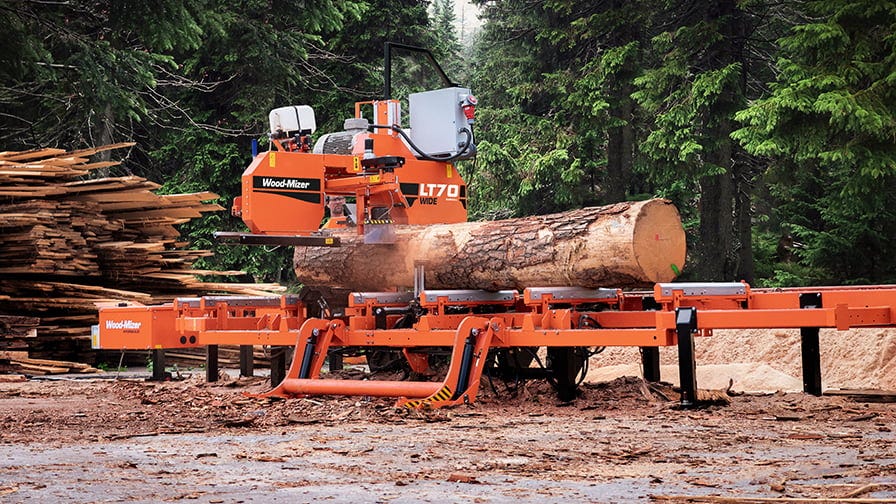
Blades
Having made sure that all adjustments have been made, we proceed to the main key to "wavy" cuts - the blade. First of all you should remember that it is very important to sharpen and set blades correctly. Very often "wavy" cuts appear when you try to saw with a blunt blade. Too little set also significantly decreases the cutting rate. Moreover even a very sharp blade warms while sawing and you should often check its tension.
Hook angle affects "wavy" cuts the same way. If this angle is more than the optimum, the blade is overloaded, if the hook angle is less than the optimum then the cutting rate decreases.
You should pay special attention to irregular tooth set. If it differs too much from tooth to tooth, "wavy" looking cuts will appear, often in relation to density changes within the timber. If tooth set differs on each side of the blade, "wavy" cuts will appear because the blade will try to cut towards the side with the larger set and will then try to straighten itself.
If the tooth height differs from tooth to tooth then the blade will cut jerkily and with a lot of vibration. You should never forget about the harm, which can be caused by burrs being left on the blade. Burrs cause the cutting rate to decrease, the blade warms up, and "wavy" cuts appear.
Very often the blade is damaged if it slips off the blade wheels or it is incorrectly removed and jammed. Many people try to straighten such blades and try to use them further, but it is impossible to get quality cuts with such blades.
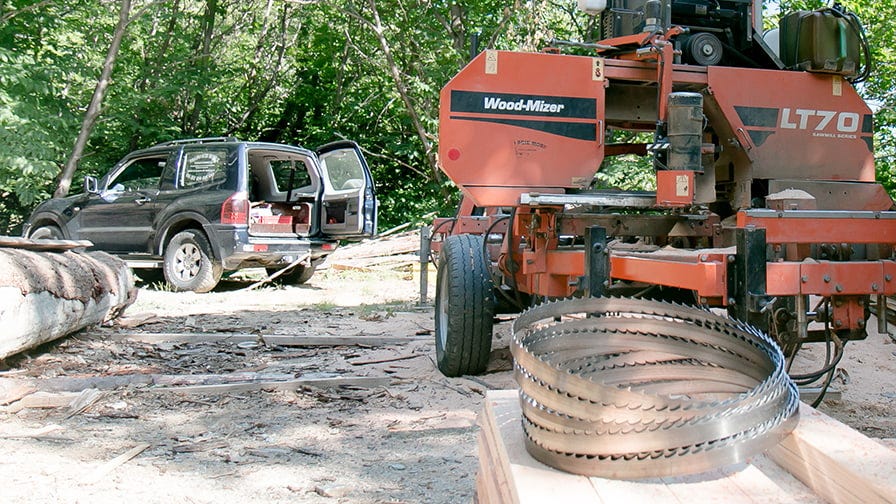
Get a Free Ebook
Find out how to improve your blade performance and extend blades lifetime. Subscribe to our newsletter and get an ebook covering the ten most important topics on bandsaw blades and links to useful videos.
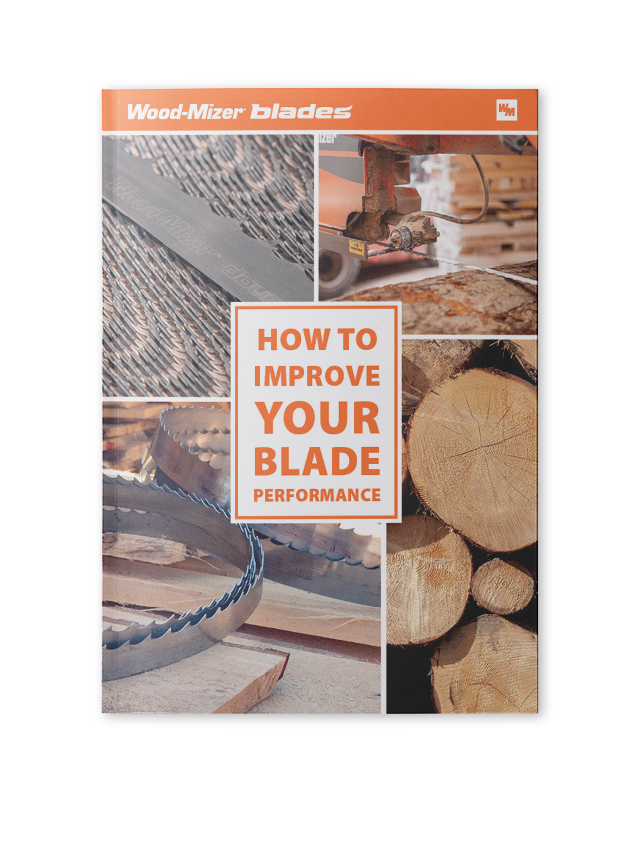
Wood
Let us review wood characteristics, which affect the appearance of "wavy" cuts. First of all we should mention irregularity within the log. Usually the log core has less density than the outer layers (especially in softwood species). That is why there is more sawdust while sawing the core. The blade in these layers does not cope with sawdust removal. As a result the back of the blade warms and expands. The blade bends and we get "wavy" cuts. It is difficult to select blade parameters so that it cuts equally well in the inner and outer layers of a log. In normal circumstances the correct profile for the wood to be cut will give you good average performance.
The majority of operators know the problem of "wavy" cuts when cutting frozen wood. While cutting completely frozen wood is normally no problem, cutting partially frozen wood is very difficult. Again, the choice of the right blade profile for frozen wood will alleviate most problems.
If you saw wood with many knots, then the risk of "wavy" cuts increases many times. In this case you should be very careful. It is important to decrease and then smoothly increase the cutting rate when passing through every knot. Special problems occur when cutting extremely pitchy wood. The problem is that sawdust and pitch stick on the blade; this is just like the blade thickness increasing. As long as the kerf is not changed, the blade sides start rubbing on the timber in the cut, warming up, and with a decrease in tension "wavy" cuts will occur. We recommend you to brush or spray a chemical agent on the blade. Dish washing detergent and Pine Sol are popular and can be used in waterlube.
Wood-Mizer designed the LubeMizer system, which delivers the lubrication and cleaning agents onto both sides of the blade in a precisely controlled manner. We advise you to buy this system and use it when cutting extremely pitchy wood.

